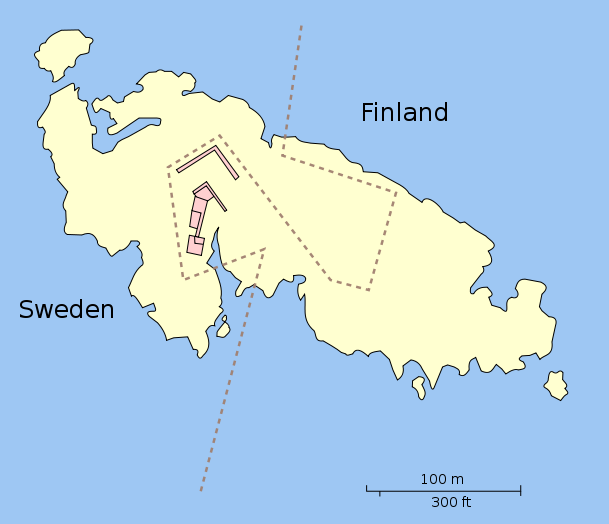Long Division
Märket, an island 8.2 square miles, lays between Sweden and Finland in the Gulf of Bothnia, just at the opening into the rest of the Baltic Sea. A skerry, Märket is too rocky to be habitable, but its location — and the treaty which ended the Finnish War in 1809 — set the state for a peculiarity of both history and geography.
In the early 1800s, Sweden and Russia found themselves battling over what is present-day Finland. By September of 1809, these hostilities came to a close, and Sweden ceded Finland to Russia as part of the Treaty of Fredrikshamn. Märket, the red-circled island on this map, was divided in half — the western part remained with Sweden while Russia took control over the eastern half — ensuring that both Sweden and Russia had access to the Baltic from the north. In 1885, the Russians built a lighthouse on their half of Märket.
Or, they tried to. At the time, there were no clear maps of the island, and the Russians accidentally built the lighthouse on the Swedish side of Märket.
Thankfully, this accident did not rekindle hostilities. The problem was mostly ignored for a century. In 1985, the two nations (with Finland, now indepedant, stepping into Russia’s shoes) divided the island amicably, and in a way to keep the lighthouse on the Finnish side of the island. Because each side wanted to maintain equal shares of land area and coastline, the international border between Finland and Sweden now has this weird carve-out in it, as pictured in the map below:

The lighthouse has been unmanned (running automatically) since 1979, but more recently, has been relegated to unimportance due to the advent of GPS and similar technologies. As such, it’s fallen into disrepair. A group of Fins is trying to raise money to restore it. What happens to the borders if the lighthouse is removed? To date, that question remains open.
Bonus fact: The lighthouse on Märket is a mere 125 years old. The world’s oldest existing lighthouse is believed to be the Tower of Hercules, in Spain, which has been in use in one capacity or another for over 2,000 years.
From the Archives: The Swedish Solar System: Sweden turned itself into a scale model of the Solar System.

Leave a comment